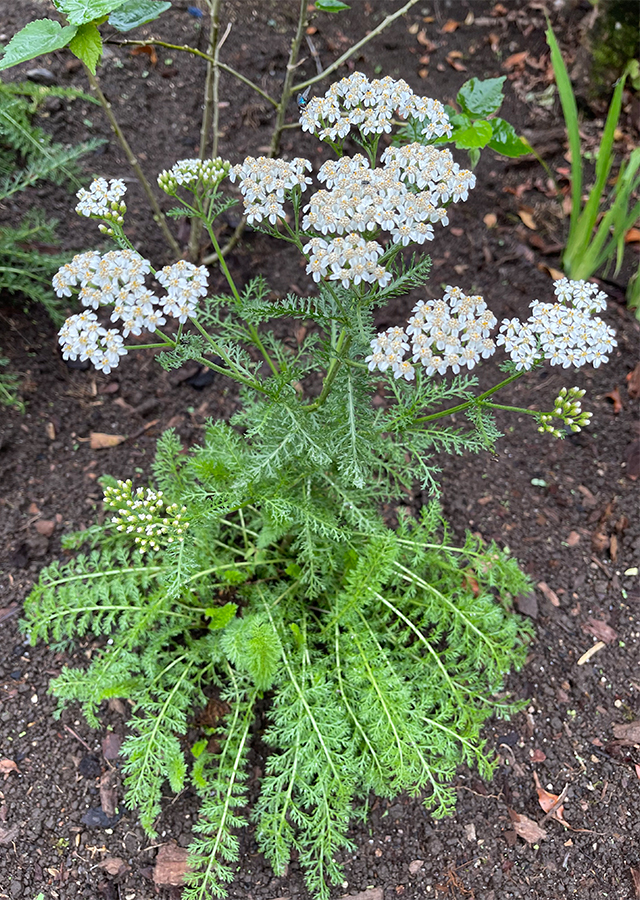Traditional Herbs from Achillea millefolium
toothache
- Take fresh leaves of the thousand leaf plant, wash them until clean.
- Chew the leaves to treat toothache.
earache
- Take fresh leaves of the thousand leaf plant, wash them until they are clean.
- Soak in water for some time.
- Strain then drop the water soak to fill the ear canal for earache.
What is Achillea millefolium Looks like??



Parts of Achillea millefolium that could be used
- Leaves
- Flowers
- All Parts of the Plant
Achillea millefolium Distribution
Thousand leaves are considered native to Eurasia and North America and are found primarily throughout the temperate and boreal zones of the Northern Hemisphere to a lesser extent in the Southern Hemisphere. This species has been widely distributed in North America, Central America, Asia, and Europe, and has also been introduced to Bhutan, China, Japan, Australasia, parts of Africa, and South America. Thousand leaves are one of the oldest plants known to have been used by humans and cultivated for their medicinal properties and as an ornamental plant. This species has a long history of herbal use and is included in the national pharmacopeias of Germany, the Czech Republic, France and Switzerland. In Brazil, it is included in the list of 16 medicinal plants of Verde Saude (Green Health), a public health phytotherapeutic institute. Ancient Europeans called it Herba Militaris because of its role in healing wounds and stopping bleeding in battle. In the Unani system of medicine, the flowers are used as an abortion medicine and emmenagogue. Apart from being a medicinal and ornamental plant, this species can be used as an aromatic tea (from flowers and leaves), a substitute for hops in brewing beer, a source of nectar for many insects, a plant that repels animals (mosquitoes, beetles, ants and flies), a source of dyes yellow and green, are also listed as ingredients in cosmetic products.Agroecology of Achillea millefolium
Thousand leaves can grow in areas at altitudes ranging from sea level to mountainous areas (0 - 3,600 m above sea level) and are found growing in various habitats including grasslands, forests, river banks, fallow fields, grassy waste areas, edges of paths, yards, fence. It is also one of the understory species in the boreal forest. This species can grow well in almost any type of soil, temperature, climate, and altitude. Found in dry or sandy soil, moist, clayey, and salty soil, with low levels of nutrients and moisture. Generally grows in open areas but is shade tolerant. This species is also tolerant of drought and frost (tolerating temperatures down to around -25 °C), but not tolerant of flooding.
Morphology of Achillea millefolium
- Taproot, light brown.
- Stems are not woody, erect, simple or branched, massive, round, green, densely lanate-tomentose (woolly-like) to glabrate.
- Leaves alternate ( alternate), sitting hugging the stem, green, compound, clustered at the base of the stem and smaller leaves at the top, leaf spines pinnate, the leaf structure is lobed, very divided, until 3-pinnatifid, lanceolate to linear.
- Compound flowers, small, stalked, aromatic, have five corollas, color varying from white to pink, magenta, and red. The outer florets in each capitulum are usually 5-lobed, female,. ligulate with approximately 3-dentate. Inner flower florets hermaphroditic, 5-lobed, with compressed corolla tube. Pistil forming an umbrella achene compressed, small, oval or ovate, without pappus, brown.
- Seeds are round, flat and black.
Cultivation of Achillea millefolium
- Propagation generatively (seeds) and vegetatively (shoot cuttings, suckers or suckers).
- Seeds usually germinate in 1 - 3 months.
Achillea millefolium, more details :
Chemical Content of Achillea millefoliumAlkaloids (achilleine, achilletine, and moscatine), flavonoids (apigenin and luteolin-7-O-glucoside), glycosylflavones (especially swertisin, vicenin-2 and -3, schaftoside and isoschaftoside), 6-methoxylated or di- and tri-flavonols methylated (such as pectolinarigin, 3- methylbangunetol and 3,6,4'-methylquerccetagetin), polyyne, alkylamides, triterpenes, saponins, coumarins, tannins, essential oils (azulene, eucalyptol, camphor, alpha-terpineol, beta-pinene, α-pinene, 1,8-cineole , sabinene, myrcene, linalool, β-thujone, α-thujone, α-phellandrene, limonene, and borneol), aconitic acid, nuline, asparagine.
Benefits of Achillea millefolium
Helps heal wounds, inflammation of the skin and mucous membranes, eliminate itching, bruising, overcome colds, fever, obstructed sweating, digestive disorders (ulcers, flatulence, heartburn, colic, diarrhea), epilepsy, varicose veins, hemorrhoids, menstrual pain, kidney disorders , nervous disorders, stops bleeding in the lungs, kidneys and nose (nosebleeds), relieves rheumatism, toothache, headaches, earaches, lowers blood pressure, stimulates appetite, strengthens hair and prevents baldness, abortion medication and emmenagogue. Has anti-inflammatory, antioxidant, antimicrobial activity.
Simplisia of Achillea millefolium
- Prepare enough fresh leaves of the thousand leaf plant,\u00a0wash thoroughly with running water\u00a0then drain.
- Dry in direct sunlight for several days or in an oven at a temperature\u00a040 \u00b0C until the moisture content\u00a010%.", "Blend it using a blender until it becomes powder.
- Store\u00a0simply in plastic or a clean, airtight container.
Another Facts for Achillea millefolium :
Synonym of Achillea millefoliumAchillea dentifera DC., Achillea tenuifolia Salisb., Alitubus millefolium (L.) Dulac
Habitus of Achillea millefolium
Herb. An annual erect herb, growing up to 100 cm tall
Habitat of Achillea millefolium
- Riverside", "Forest", "Coastal", "Roadside", "Rocky Area", "Shrub Area", "Grassland", "Land
No comments:
Post a Comment